.(Name: Mouse anti-human Cytokeratin Monoclonal Antibody (Clone AE1
Description and applications: Due to the high homology among the different molecules, it is common for a monoclonal antibody to react with different types of cytokeratins; for example, anti-cytokeratin AE1 labels medium molecular weight acidic cytokeratins 10, 14, 15, 16, and 19, and low molecular weight acidic cytokeratin 19. Proteins generically called intermediate filaments, because they measure between 7 and 22 nm in diameter (i.e., with a size between actin, 5-7 nm, and tubulin, 22-25 nm), are part, along with actin and tubulin, of the vertebrate cytoskeleton. This superfamily is composed of six subfamilies of molecules with different tissue expression patterns. Cytokeratins constitute homology groups I and II, and in humans they are encoded by more than 49 different genes located in chromosomes 17 (I) and 12 (II). The nomenclature chosen in 1982 by Moll and Franke assigns numbers from 1 to 8 to type II cytokeratins (neutral or basic) and from 9 to 21 to type I cytokeratins (acidic). An analogous nomenclature for hair keratins has now been defined, with the addition of letters Ha and Hb to distinguish type I from type II. Structurally, cytokeratins share with the rest of intermediate filaments a central axisof 310 amino acid residues consisting of four highlypreserved α-helical domains (1A, 1B, 2A, and 2B) that define the type of intermediate filament that will be formed after assembly; these domains are separated by three non-helical linking regions (L1, L12, and L2) and two end domains which are highly different in, size and sequence (head, 1, and tail, 2), each with constant (E1/E2), variable (V1/V2), and homology (H1/H2) regions, the latter characteristic of type II keratins and absent in type I keratins. The major immunogenic properties and the main differences between each keratin class are found in the variable domains. Keratins are usually assembled into I/II heterodimers and are specifically co-expressed in pairs in each tissue. This antibody is widely reactive and labels almost all types of epithelia, thus being one of the best antibodies for the preliminary screening of neoplasms of an epithelial origin, and specially for the identification of malignant metastatic tumours of this origin. It does not react against all hepatocarcinomas, basal cell carcinomas, and adrenocortical carcinomas, and it partially reacts against renal cell carcinomas, small cell lung carcinomas, and large-cell carcinomasof the lung.
IMMUNOGEN: Epidermal cytokeratin.


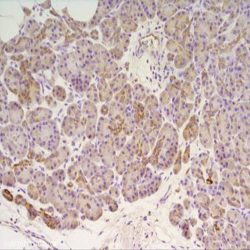
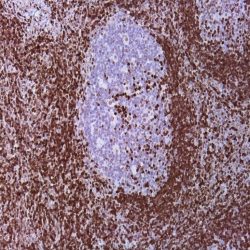
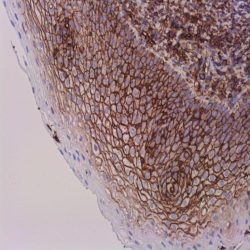
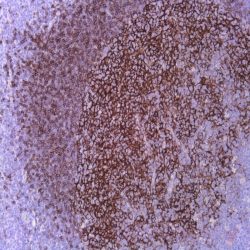
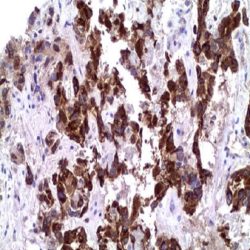
دیدگاهها
هیچ دیدگاهی برای این محصول نوشته نشده است.